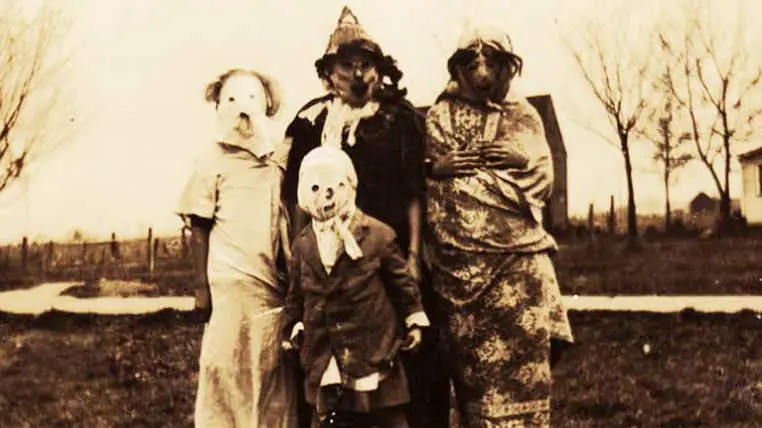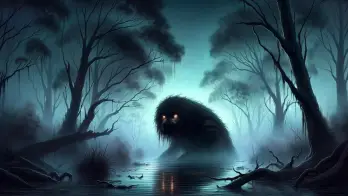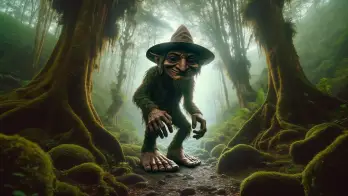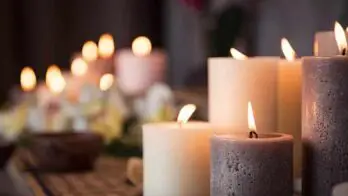Halloween is a time of joy and superstition, with many traditions, myths, and superstitions having their roots in the ancient Celtic festival of Samhain, where Celts would gather around a fire and dress in animal skins to scare away evil spirits.
Pope Gregory III designated November 1st as “All Saints’ Day” in the 8th century, a celebration day incorporating some old Samhain traditions.
The evening before All Saints’ Day was known as “All Hallow’s Eve,” which eventually became Halloween.
Over time, the celebration has evolved into an event characterized by community activities and traditional trick-or-treating, in which costumed children are rewarded with candy.
The Origins of Halloween
Halloween has its origins in an ancient Celtic festival called Samhain.
2,000 years ago, Celts who lived in the area now occupied by Ireland, Great Britain, and northern France celebrated the new year on November 1st.
The day marked the end of summer, the harvest period, and the beginning of winter, a time of year often associated with death.
The ancient Celts believed that on the evening before the new year, the barrier between the world of the living and the world of the dead was thinner than ever, allowing the souls of the departed to cross into our world for one night.
Thus, Samhain was celebrated on the evening of October 31st.
The return of the dead to our world was usually associated with misfortune and disaster. Restless spirits had a detrimental effect on the coming year’s crops and caused all sorts of misfortunes in the community.
But the evening of October 31st was different. People invited the spirits to cross into the world of the living, and priests and druids used the occasion to foretell the future.
For people who were heavily dependent on nature, the priests’ predictions for the coming year were essential and helped them to more easily overcome the difficult winter period.
In honor of the Samhain celebration, druids would light massive fires around which the entire community would gather to burn crops and sacrifice animals in honor of the old gods.
The entire population would dress up during the celebration, usually wearing animal heads and skins.
The sacred fires would remain lit until dawn, when each community member would take from the holy fire and light their own home fire.
By 43 AD, the Romans had conquered most Celtic territories.
In the 400 years of Roman occupation that followed, the ancient pagan celebration of Samhain received additional influences from the conquerors’ culture.
Two Roman festivals stood out: Feralia (celebrated at the end of October and during which the Romans celebrated their dead) and the Day of Pomona (the Roman goddess of trees and fruits).
On May 13th, 609 AD, Pope Boniface IV decided that the famous Pantheon of Rome would become the symbol of all Christian martyrs.
May 13th was declared a holiday for all Catholic Christians. The day (known as All Martyrs Day) was celebrated with plenty of food and drink.
Pope Gregory III (731 – 741) moved All Martyrs Day from May 13th to November 1st.
By around 900 AD, All Martyrs Day had already merged with several pagan holidays, including Samhain, which was not to the liking of the Church.

Thus, in 1000 AD, the Catholic Church declared the day of November 2nd as All Souls Day (or “Day of All Souls”), a special day dedicated to those who had passed away.
Historians believe that the Catholic Church attempted to replace the pagan celebration with one with powerful Christian influences.
However, All Souls Day came to be celebrated just like the Samhain celebration: bonfires, parades, and costumes (of angels, saints, or demons).
In time, All Souls Day became known as All Hallows or All Hallowmas (in Old English, “alholowmesse” meant All Saint’s Day).
The night before the All Hallows became known as All-hallows-eve. Later the name changed to Halloween.
Halloween Traditions
Halloween was not a popular holiday in the British colonial territories due to the many Protestants living there.
However, the situation was quite different in the southern half of the American continent, especially in Maryland, where European traditions blended with the myths of the Native American population.
This facilitated the rise of a new type of Halloween celebration based on public parties, various events to honor the harvest, horror stories, and traditional dances and songs.
However, the Halloween of that time had nothing to do with today’s celebration.
The tradition of going door-to-door and the specific Halloween costumes were only adopted in the mid-19th century, with the arrival of millions of Irish refugees who brought with them a whole new series of European influences.
By the 1920s-1930s, the Halloween celebration had already become extremely popular throughout the American continent.

But the sudden popularity of this celebration was not without problems and controversies.
Being a festival of parades, parties, and opulent carnivals, Halloween became marred by violence and acts of vandalism, causing local authorities to severely limit the scope of the festivities, restrictions that have been in place for 20 years.
By limiting the public festivities, American authorities opened the door to another old tradition of Halloween: door-to-door trick-or-treating.
According to tradition, children go door-to-door on Halloween night with the intention of “playing tricks” on the neighbors.
However, if the homeowners offer them gifts (candy), the trick-or-treaters leave satisfied and the homeowner is protected from evil spirits.
Halloween Superstitions
Halloween is a celebration shrouded in mystery, magic, and superstition, with some traditions dating back over 2,000 years.
The Celts celebrated Samhain night with the spirits of their deceased relatives and friends, for whom they prepared lavish feasts.
However, the influences of the past 50-60 years are more than evident, as the modern celebration gravitates mainly around spiteful, jealous, and dark spirits.
Halloween night is full of superstitions.
People avoid black cats because they bring bad luck into the home. This belief originated in the Middle Ages when black cats were often associated with witchcraft.
People also avoid walking under staircases, possibly because it is risky to pass underneath them or due to the ancient Egyptian belief that triangles are sacred.
People avoid breaking mirrors, stepping on broken pieces, or spilling salt on Halloween.
Besides the superstitions of today, there were also Halloween rituals that the modern celebration still needs to remember.
For example, in Ireland in the 18th century, unmarried young women who prepared the Halloween table hid a ring in the mashed potatoes served to the guests.
There was usually a young man whom the girl liked among the guests, and if the young man found the ring, the two were destined to be together.
In Scotland, young women collected several nuts, which they would name after their suitors.
They would then throw the nuts into the fire, and the nut that burned and turned to ashes was said to represent the chosen man.
At Ancient Theory we only use trusted sources to document our articles. Such relevant sources include authentic documents, newspaper and magazine articles, established authors, or reputable websites.
- Heather Thomas - The Origins of Halloween Traditions.
- Halloween. history.com.
- June Pulliam și Anthony J. Fonseca - Ghosts in Popular Culture and Legend. ABC-CLIO, 2016.
- 15 Spooky Halloween Traditions and Their Origins. [Source]
- Origins of Halloween Traditions. almanac.com.







